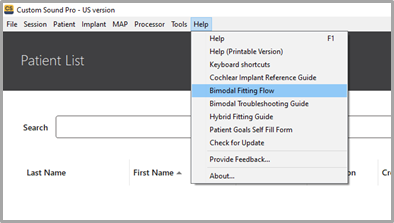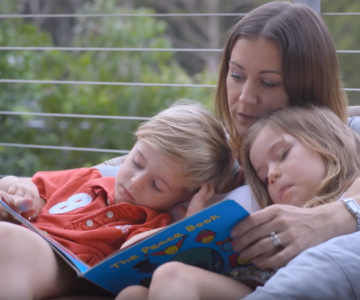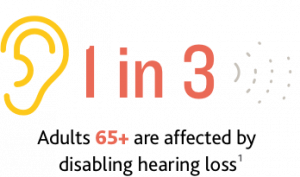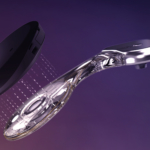
By Mary Beth O’Sullivan, Professional Education Manager, Cochlear Americas
Age-Related Changes in Temporal Resolution Revisited: Electrophysiological and Behavioral Findings From Cochlear Implant Users
Bruna S. S. Mussoi and Carolyn J. Brown
Ear & Hearing (2019) 40, 1328-1344
In today’s busy clinical environment, clinicians who value research-based practice often struggle to keep up with current literature. To help, we’re excited to offer a new ProNews Blog monthly feature – Journal Club! Each month, rotating guest authors will present a current journal article summary.
This month’s Journal Club explores a recent 2019 study, Age-Related Changes in Temporal Resolution Revisited: Electrophysiological and Behavioral Findings From Cochlear Implant Users. Factors such as etiology and duration of deafness are well-documented influences on cochlear implant patient outcomes, but the specific role that aging plays on performance is still being investigated.
Studies have shown that older adults demonstrate similar outcomes as other age groups when testing is conducted in quiet, while performance for testing in noise resulted in significant differences.1,2 These findings could be attributed to peripheral and/or central causes, and the recent publication by Mussoi and Brown adds important details to this body of literature by evaluating aspects of both.
What did the study investigate?
Goals of the study include to:
- Re-examine age-related changes in temporal resolution CI users
- Assess the impact of aging on the relationship between temporal resolution, cognition and perception of speech in noise in CI users
Why is this important?
As cochlear implant clinicians, we are driven by optimizing performance for our patients. Clarifying influential factors helps to ensures best practice for counseling expectations as well as for programming older adults. The authors point out that our understanding of the affect of aging has relied on data accumulated decades ago and deserve a fresh look with current accepted methodology and technology.
How did they do it?
Here is your need-to-know:
- 20
post-lingually deafened subjects
- 10 subjects age 18-40 years old
- 10 subjects age 68-82 years old
- Native English speakers
- Cochlear Nucleus® recipients with a minimum of one year of listening experience
- Full insertion a minimum of 19 active electrodes
- Cognitive screening score cutoff of 27/30
- Subjects were tested unilaterally. Bilateral CI recipients utilized the preferred better hearing ear and bimodal listeners removed the contralateral hearing aid.

Peripheral Evoked Potential Recordings: ECAP recordings of auditory nerve function were stimulated with Custom Sound® software and recorded on a mid-array electrode previously identified as a robust option. Auditory nerve function was assessed with varying intervals between a masker and probe stimuli, meaning that the nerve was in different states of recovery. The masker stimuli consisted of either a single pulse (refractory recovery paradigm) or a constant pulse train (pulse train recovery paradigm), adding to the challenge of neural recovery and more closely resembling typical CI use.
Central Evoked Potential Recordings: cortical-evoked responses were recorded using stimuli consisting of two constant pulse trains separated by a gap which varied in duration.
Perceptual Measures: Using the same stimuli as the central electrophysiological recordings, gap detection thresholds were measured by providing three presentations and requiring subjects to choose the option with the different gap interval. Speech perception was tested via direct audio input via Quick Speech Perception in Noise (Quick SIN).
Cognitive Measures: Two tests of processing speed and one test of working memory were utilized.
Results and Discussion3
No significant findings were reported in peripheral or central evoked potential or the perceptual measures components of the study. All subjects passed stringent criteria with the cognitive screening. The only significant finding was that the speed of processing was slower for the older adults, which is consistent with normative data of the general population. When relationships between the various measures was analyzed, one of the temporal resolution measures were correlated to speech in noise. Working memory was the only measure that correlated with speech in noise.
Results of this study suggest that the effect of advancing age on temporal resolution is minimal, but changes working memory as we age appear to correlate with poorer performance in noise. The authors acknowledge the small sample size and the possibility that the stimuli used were not challenging enough to reveal age effects. However, more challenging tasks can may become a test of decreased cognitive abilities. According to the authors, this is only the second study of its kind in which subjects are all CI recipients. This could be important criteria in separating the effects of age and hearing impairment.
The older adult population is a bracket that will continue to grow in numbers and increasing need for hearing implants and successful intervention. It will be exciting to continue to learn from studies that focus on this area.
Learn more about by accessing the publication and stay tuned for next month’s edition of Journal Club!
About our guest author: Mary Beth O’Sullivan is a Professional Education Manager at Cochlear Americas, creating educational opportunities for cochlear implant professionals using research and best practice guidance. Mary Beth has been an audiologist for 20 years, working in clinical settings ranging from large university hospitals to private practice prior to dedicating herself to the education side of the field.
References
1. Forli, F., Lazzerini, F., Fortunato, S., Bruschini, L., Cerrettini, S. (2019). “Cochlear implant in the elederly: Results in terms of speech perception and quality of life,” Audiology & Neurotology, 24, 77-83.
2. Lenarz, M., Sönmez, H., Joseph, G., Büchner, A., Lenarz, T. (2012). “Cochlear Implant Performance in Geriatric Patients,” Laryngoscope. 122, 1361-1365.
3. Mussoi, B. S. S., and Brown, C. J. (2019). “Age-related changes in temporal resolution revisited: Electrophysiological and behavioral findings from cochlear implant users,” Ear & Hearing. 40, 1328-1344.







